In 1994, at the age of 49, Jim Clark, owing to a company called Silicon Graphics, was one of the legends of the high-tech world. 20 years later, he became a legend in sailing (see Sailing World 28 October 2014.) Today we view him as a model of the American Dream.

American Dream
- Religious Freedom
During the colonization period, the American Dream was rooted in the pursuit of religious freedom and the belief that hard work and ambition would lead to prosperity and spiritual peace. The Puritans, who fled religious persecution in England, believed that success on earth would eventually lead to eternal life in heaven. More on this below.

- 2. Home Ownership
After World War 2, the American Dream evolved to include single-family home and car ownership, driven by the G.I. Bill of Rights, which enabled returning veterans to get an education and purchase homes in suburban areas.
- 3. Lifetime Employment Dream
Lifetime employment has been a part of the American Dream for many working Americans. The traditional American Dream included the promise of job security with decent wages, health care, and benefits, as well as the opportunity for training, education, and advancement. It also encompassed the ability to own a home, raise a family, and eventually retire after a fulfilling career1. Work is considered essential to the American Dream, providing individuals with the opportunity, responsibility, and community they need to flourish3.
For some, self-employment has has replaced the lifetime employment Dream4.
The American Dream can mean different things to different people, and the traditional notion of lifetime employment may not be as prevalent today due to changing economic and employment landscapes5. For many decades, the only opportunity for lifetime employment in the USA was through a union or with government. And that is changing with internet time.
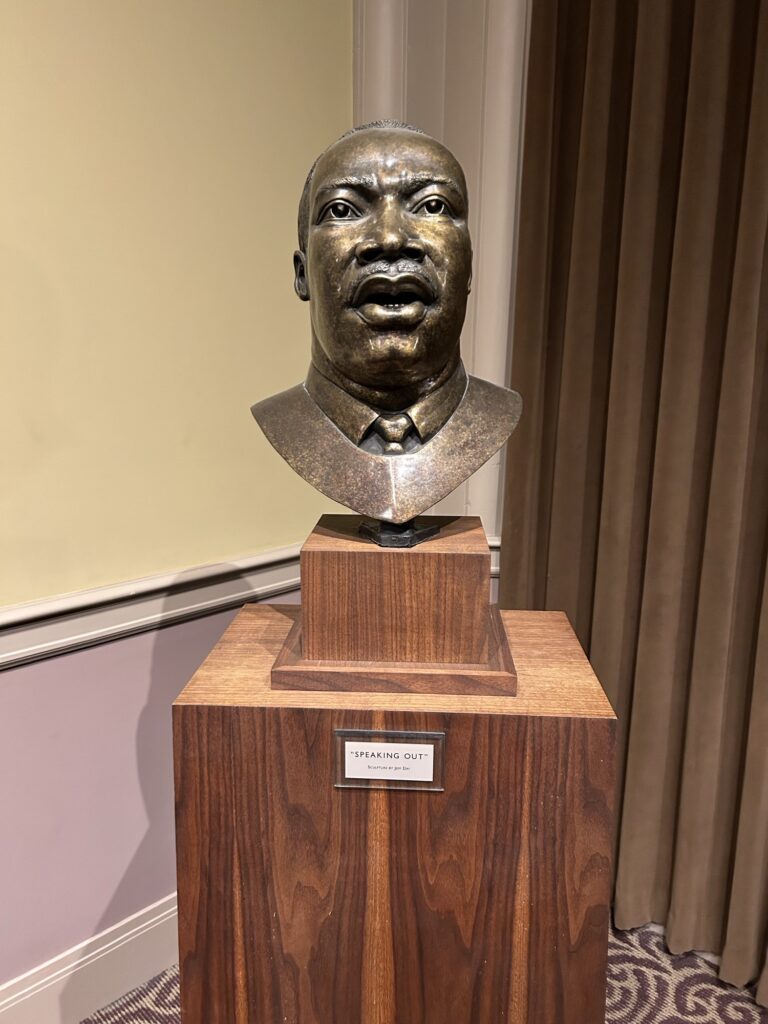
ON NOVEMBER 10, 1961, the Reverend Dr. Martin Luther King Jr. spoke from the stage at the north end of the Eagles Auditorium in Seattle. “The nation and the world stand on the threshold of a new age,” Dr. King said on that occasion, “the age when men of all races will go hand in hand.”
4. MLK Opportunity for All Dream
The US government has attempted to incorporate indigenous, Mexican, and Black cultures into the American Dream as portrayed by Martin Luther King Jr. is his “I have a dream” speech by promoting the idea that hard work and ambition can lead to success for everyone, regardless of their background. The attempt involved Equity Diversity and Inclusion programs now believed unnecessary and anti-white by the Trump Administration. Nonetheless the dream remains American.
DOGE Overview
The Department of Government Efficiency (DOGE) is an advisory initiative under the Trump administration aimed at streamlining government operations, reducing spending, and cutting federal workforce numbers. DOGE consultants primarily come from Silicon Valley and private-sector tech firms, including companies associated with billionaires like Elon Musk, Marc Andreessen, Jim Clark and Peter Thiel.
DOGE Consultants and Olegarch-Owned Companies
DOGE consultants are drawn from companies owned or backed by prominent billionaires:
- Elon Musk: SpaceX, Tesla, The Boring Company, and X (formerly Twitter).
- Marc Andreessen: Andreessen Horowitz (a16z), a major venture capital firm.
- Peter Thiel: Palantir Technologies with Jim Clark and Marc Andreessen investment and Founders Fund.
These individuals and their companies provide expertise in technology, data analytics, and operational efficiency.
Federal Rules for DOGE Contractors
DOGE consultants often serve as Special Government Employees (SGEs):
- SGEs are limited to working 130 days per year for the federal government.
- They must adhere to federal ethics rules under Title 18 of the U.S. Code.
This classification allows private-sector experts to contribute without becoming full-time federal employees.
Palantir Software in DOGE Studies
Palantir’s software could play a critical role in DOGE studies:
- Palantir Gotham: Used for integrating and analyzing large datasets, often deployed in intelligence and law enforcement.
- Palantir Foundry: A platform for data integration and decision-making that could help optimize government operations.
- Palantir AIP: An AI platform that integrates large language models for advanced analytics.
These tools are well-suited to DOGE’s goals of improving efficiency through data-driven insights.
Palantir Ownership and Board Members
Major Shareholders:
- Peter Thiel: 7.2% ownership.
- Alex Karp (CEO): 2.5% ownership.
- Institutional investors like The Vanguard Group (9.4%), BlackRock (4.7%), and others also hold significant stakes246.
Board Members:
- Alex Karp: CEO of Palantir.
- Peter Thiel: Co-founder of Palantir and PayPal with Elon Musk and financed the Vice Presidents career.
- Stephen Cohen: Co-founder and President of Palantir.
- Other members include Alexander Moore, Alexandra Schiff, Lauren Friedman Stat, and Eric Woersching26.
Competing with Palantir
Palantir competes with firms like Accenture, IBM and Microsoft for government contracts in areas such as data analytics and IT consulting. However, Palantir’s specialization in handling sensitive government data gives it a unique edge over these firms.
Palantir’s software played a pivotal role in advancing AI-driven solutions across multiple federal agencies during the Biden administration, particularly in defense, fraud detection, and regulatory initiatives. Its strategic lobbying and revolving-door hiring practices cemented its influence in Washington prior to Trump’s second term, securing billions in government contracts28.
Palantir Technologies is currently involved in several significant government contracts:
- U.S. Army TITAN Ground Station Program: Palantir was awarded a $178.4 million contract to develop a next-generation intelligence ground station system. This project involves building five basic and five advanced variants of the Tactical Intelligence Targeting Access Node (TITAN) system, utilizing AI and machine learning to collect insights from various sensors135.
- Maven Smart System for the U.S. Army: Palantir secured a $480 million contract to expand the Maven Smart System, an AI tool that integrates data from multiple sources to identify enemy systems. This system is part of Project Maven, a key AI initiative by the Pentagon345.
- ARPA-H Contract: Palantir entered a $19 million contract with the Advanced Research Projects Agency for Health (ARPA-H) to provide AI and data software for supporting its research programs and data infrastructure2.
- Army Contract Extension: Palantir recently extended a major U.S. Army AI contract worth $619 million, further solidifying its role in providing AI solutions to the military8.
Joe Lonsdale and Marc Andreessen, both prominent figures in Silicon Valley, play significant but unofficial roles in the Department of Government Efficiency (DOGE). Here’s a breakdown of their specific involvement:
Joe Lonsdale
- Advisory Role: Lonsdale, co-founder of Palantir Technologies, serves as an advisor to DOGE26.
- Strategic Input: He provides insights on potential areas for government spending cuts and efficiency improvements4.
- Realistic Assessment: Lonsdale offers a pragmatic view on DOGE’s goals, suggesting that while $1 trillion in cuts might be achievable, further reductions would be challenging2.
- Network Facilitator: He mentions that “dozens of friends” are helping out in various ways, indicating his role in connecting talented individuals to the initiative2.
Marc Andreessen
- Talent Scout: Andreessen, co-founder of Andreessen Horowitz, is actively involved in identifying and interviewing candidates for DOGE1.
- Unofficial Recruiter: While holding no official position, he leverages his extensive network to attract high-level candidates to the initiative1.
- Self-described “Unpaid Intern”: Andreessen humorously refers to himself as an “unpaid intern” at DOGE, highlighting his informal yet significant involvement35.
- Strategic Advisor: He provides insights on DOGE’s focus areas, including workforce numbers, government expenditures, and regulatory measures5.
- Spokesperson: Andreessen has been vocal about DOGE’s initiatives, particularly the focus on bringing federal workers back to offices5.
Both Lonsdale and Andreessen are leveraging their Silicon Valley expertise and networks to support DOGE’s mission of reducing government spending and increasing efficiency. Their involvement underscores the initiative’s reliance on tech industry talent and perspectives in its approach to government reform.
Biden’s administration focused on modernizing federal operations through initiatives like the U.S. Digital Service (USDS) and broader efforts to improve government efficiency. These initiatives were not branded as “DOGE” but aimed at similar goals of optimizing government functions.
Again both the Trump and Biden administrations have utilized several Palantir AI software products for various purposes:
- 1. Palantir Gotham: Used by counter-terrorism analysts in U.S. Intelligence Community and Department of Defense.
- 2. Investigative Case Management (ICM): A $41 million system built for U.S. Immigration and Customs Enforcement (ICE) to track personal and criminal records of immigrants.
- 3. Maven Smart System: An AI tool for unmanned drones used for bombings and intelligence, which Palantir took over from Google in 2019.
- 4. AI targeting technology: Part of Palantir’s key government contracts for the U.S. military.
- 5. TITAN: A battle management system for the U.S. Army.
While the search results don’t explicitly state that both administrations used all of these systems, they indicate continuity in Palantir’s government contracts across administrations. The Biden administration also engaged with Palantir on AI safety commitments, suggesting ongoing use of Palantir’s AI technologies.
It’s worth noting that Palantir’s influence and contracts have expanded under the Trump administration, with former Palantir executives being appointed to key government positions. This trend is expected to continue in Trump’s second term, potentially increasing the use of Palantir’s AI software across federal agencies.
Based on the search results, here’s a breakdown of fraud, abuse, and operational savings found during Biden’s last year in office and Trump’s expectations for his term:
Biden Administration Findings (Fiscal Year 2024)
Improper Payments Reduction
- Total improper payments: $161.5 billion (3.97% rate)
- Reduction from previous year: $74.5 billion
False Claims Act Recoveries
- Total recoveries: $2.9 billion
Trump Administration Expectations
DOGE Initiative Projections
- Estimated weekly fraudulent Treasury payments: $1 billion
- Projected annual savings: $52 billion (based on weekly estimate)
Areas of Focus for Fraud Detection
- USAID
- Education Department
- Military spending
Trump claims that the DOGE team has found “very fraudulent stuff” and expects to uncover significant waste, fraud, and abuse across multiple government agencies. However, specific numerical projections beyond the Treasury estimate are not provided.
Total Savings Comparison
- Biden Administration (FY 2024): $77.4 billion (improper payment reduction + False Claims Act recoveries)
- Trump Administration: Projected to be in the “trillions,” according to Trump’s statements, though specific breakdowns are not available
It’s important to note that the Trump administration’s projections are significantly higher than the actual savings reported by the Biden administration, and the feasibility of achieving such large-scale savings remains to be seen.
Now (November 26, 2025) we have enough information to provide a comprehensive answer.
DOGE’s Claimed Benefits, Failures, Legal Violations, and Workforce Implications
DOGE’s Claimed Benefits
The Department of Government Efficiency, led by Elon Musk, was established to identify and eliminate wasteful federal spending. DOGE initially claimed approximately $160 to $205 billion in total savings, citing a combination of asset sales, contract and lease cancellations and renegotiations, fraud and improper payment deletion, grant cancellations, interest savings, regulatory savings, and workforce reductions. The organization positioned itself as a means to restore accountability and empower American families and taxpayers through the elimination of “waste, bloat, and insularity” in federal agencies.cbsnews+3
Why DOGE is Considered a Failure
However, DOGE’s actual impact undermined its stated mission. A nonpartisan research group, the Partnership for Public Service, estimated that DOGE’s actions would cost $135 billion in fiscal year 2025—exceeding DOGE’s claimed savings—when accounting for costs associated with putting tens of thousands of federal employees on paid leave, rehiring mistakenly fired workers, and lost productivity. The analysis did not even include expenses for defending multiple lawsuits or impacts of IRS staff cuts on lost tax collections.cbsnews
The fundamental failures included: mass layoffs of approximately 24,000 probationary federal employees (those in their first or second years) were executed illegally; nearly 75,000 employees accepted a “deferred retirement” program offering full pay and benefits through September without working, creating substantial costs; and numerous workers had to be rehired after mistaken terminations. Additionally, DOGE personnel included young coders without government experience, and some DOGE members were making cuts at agencies they previously worked for, creating apparent conflicts of interest.wikipedia+2
Which Laws Were Violated by the Firings
Federal courts found multiple legal violations in DOGE’s mass firings:
Antideficiency Act Violations: The “Fork in the Road” resignation offer, which promised to pay employees through September 2025 while Congress had only authorized funding through March, violated the Antideficiency Act, which prohibits agencies from spending money that hasn’t been appropriated by Congress.citizensforethics+1
Office of Personnel Management Authority: Judge William Alsup ruled that OPM had no legal authority to order federal agencies to fire their employees. Only individual agencies can terminate employees, and OPM’s instruction to fire probationary employees en masse was unlawful. Judge Alsup described the government’s justifications as “fabricated” and filled with “chicanery,” noting that “it’s a sad, sad day when our government would fire a good employee and say it’s based on performance when they know good and well that is based on a lie.”themindfulfederalemployee+2
Improper Termination Procedures: Existing law provides only two circumstances under which agencies may terminate probationary employees: based on “inadequacies of [their] performance or conduct,” or due to “conditions arising before [their] appointment.” Neither was present in the mass firings. The Merit Systems Protection Board found “reasonable grounds to believe” that the USDA’s firings violated civil service laws protecting career employees from political influence.news.bloombergtax+1
Shutdown Law Violations: The Trump administration’s plan to conduct mass reductions in force during government shutdowns violated the Antideficiency Act and shutdown procedures that have been established since 2019, which require agencies to provide backpay to affected employees.govexec+1
Why a Stable Federal Workforce is Important
A stable federal workforce is critical to government operations for several interconnected reasons:
Institutional Knowledge: Federal agencies function based on “institutional knowledge” residing in the memories and experiences of staff and leadership—details of previous initiatives, established procedures, and lessons learned that guide new efforts. When experienced employees leave, this knowledge is often permanently lost. As one FECA (Federal Employees’ Compensation Act) claims specialist noted after 32 years of federal service, when experienced workers depart, they take specialized insights that don’t exist in manuals or training courses, leaving agencies “bereft.”teslagov+2
Service Delivery: Federal workers ensure critical services like food safety, emergency response, air traffic control, and national security. These services are essential and ongoing, requiring continuous expertise and operational continuity. The GSA, which manages federal buildings and facilities, discovered it “didn’t have the people they needed to carry out basic functions” after mass departures.bls+1
Preventing Political Abuse: Civil service protections, established since 1883, exist to prevent presidents from using federal employment as a political tool. The concern with DOGE and Schedule F (which would reclassify tens of thousands of career positions as at-will political appointments) is that it enables presidents to dismiss federal workers based on “resistance to policy” rather than merit or performance, fundamentally undermining nonpartisan governance.govexec+3
Operational Efficiency: Turnover costs money and creates inefficiencies. In 2017, federal employees left at the highest rate in years, with more than 45% of federal employees over 50 years old, creating risks of sudden knowledge loss from experienced personnel.teslagov
The distinction is crucial: career federal employees should be insulated from partisan political pressure, allowing them to implement policy objectively regardless of which party is in office. This protects democratic governance by ensuring the federal government serves all citizens, not just the party in power.
Does DOGE Argue for Presidents with Government Experience?
Research on this question presents a complicated picture:
Business Experience Arguments: Some research suggests that governors with business backgrounds (“CEO governors”) do improve economic conditions through liberalizing reforms and deregulation, particularly during fiscal crises. A 2014 Gallup poll found that 81 percent of Americans believe the country would be better governed with more people having business and management experience in office.pac+1
Counter-Evidence on Business-Only Leaders: However, multiple studies contradict claims that business experience alone ensures better governance:
- A 2016 College of William & Mary study of California city councils found “no evidence that the election of a candidate with business experience generates an observable change in a city’s budget or policy outcomes.”pac
- Business leadership relies on “command and control” structures where the CEO ultimately calls the shots. Federal government power is fundamentally different—it’s diffused through separation of powers, checks and balances, and federalism. The president must persuade Congress, courts, and state governments rather than command them. Persuasion, not command, is the president’s most important power.stlpr
- Unlike a corporation where efficiency might mean cutting staff or eliminating services, government must maintain services mandated by law. The disruption caused by DOGE—where institutional knowledge was lost, services degraded, and more money was ultimately spent on rehiring and legal costs than was saved—demonstrates that business-style cost-cutting without understanding government’s different operational constraints can backfire.cornellpolicygroup
The DOGE Case as Evidence: DOGE’s failures actually support the argument for presidents with government experience or advisors who possess it. The mistakes made—not understanding civil service protections, OPM’s limited authority, the Antideficiency Act, and shutdown law requirements—are matters of basic federal government law that would be familiar to someone with government experience. The reliance on young tech entrepreneurs without government background contributed directly to the legal missteps.wikipedia
Examples of Employees Who Were Rehired After Firing
Several specific categories of rehired workers are documented:
USDA/Forest Service Workers: The USDA announced in March 2025 that it would reinstate approximately 6,000 fired probationary employees, including more than 3,400 Forest Service workers, after the Merit Systems Protection Board found the firings illegal. Employees were initially reinstated on paid administrative leave while the board completed its investigation.krbd
Bird Flu Experts: The Department of Agriculture mistakenly fired bird flu experts and was forced to rehire them due to legal challenges.cbsnews
General Services Administration (GSA) Employees: In September 2025, months after layoffs, the GSA began offering to reinstate hundreds of former federal employees who had been laid off earlier in the year. GSA property management employees who had been responsible for overseeing government facilities were recalled, as the agency discovered it “didn’t have the people they needed to carry out basic functions.”nbcnewsyoutube
Probationary Employees Across Six Departments: Following Judge Alsup’s March 2025 preliminary injunction, federal courts ordered reinstatement of terminated probationary employees at the Departments of Veterans Affairs, Agriculture, Defense, Energy, Interior, and Treasury. While the Supreme Court later stayed this order in April 2025, approximately 16,000 fired federal workers had been rehired under the initial court ruling.afge+3
IRS Employees: The IRS announced it would permit certain employees who had accepted resignation offers to continue working.nbcnews
National Park Service Employees: The National Park Service rehired several employees who had been dismissed or who had accepted buyouts.nbcnews
Labor Department Staff: The Labor Department reinstated some staff who had accepted buyouts.nbcnews
Center for Medicare and Medicaid Services (CMS): According to testimony in the Maryland federal court case, Jeffrey Grant, deputy director for operations in the Center for Consumer Information and Insurance Oversight, had submitted written testimony that the justifications his agency used for probationary firings “were false” and that those hired were well-qualified and had performed well.govexec
In many cases, these employees had received seven months of paid leave while out of work, only to be recalled when agencies realized their services were essential or courts ordered their reinstatement. The DOGE experience demonstrates that mass, ideology-driven workforce reductions without case-by-case evaluation or understanding of civil service law create more costs than savings while destabilizing government operations.
Roll Models
Given the Doge experience, Musk cannot be considered further. Barack Obama and Taylor Swift have both achieved success in their respective fields, embodying the American Dream in different ways. Obama, as the first Black president of the United States, represents the breaking of racial barriers and the potential for anyone to achieve success through hard work and determination. Taylor Swift, as a successful singer-songwriter, represents the pursuit of personal dreams and the power of individual talent.
Barack Obama
Barack Obama’s embodiment of the American Dream is deeply rooted in his personal journey from humble beginnings to becoming the first Black president of the United States. His story is a testament to the idea that anyone can rise and succeed in the U.S., regardless of their background. Obama’s vision of the American Dream emphasizes the role of government in creating opportunities for everyone and fostering a cooperative effort towards success. This vision is a departure from the traditional American Dream, which often emphasizes individual effort and personal wealth.
Taylor Swift
Taylor Swift, on the other hand, represents the American Dream through her success as a singer-songwriter. Her journey from a small-town girl to a global pop star embodies the pursuit of personal dreams and the power of individual talent. Swift’s music often paints a vivid picture of life in small-town America, resonating with many listeners and encouraging them to dream about their own futures. However, her version of the American Dream also includes elements of fame and wealth, which are not necessarily part of the traditional American Dream3 8.
In her commencement speech at New York University (NYU), Taylor Swift did not explicitly discuss her interpretation of the American Dream. However, she shared valuable life lessons and insights that can be related to the concept of the American Dream. Swift emphasized the importance of embracing mistakes, following one’s intuition, and acknowledging the support of loved ones. She also encouraged the graduates to be enthusiastic and try hard when it comes to the things they love. These ideas can be seen as reflecting the American Dream’s core values of hard work, perseverance, and the pursuit of personal dreams. In conclusion, both Obama and Swift’s versions of the American Dream reflect the evolving nature of this concept, incorporating elements of personal success, hard work, and opportunity, but also highlighting the importance of community, cooperation, and individual talent. And the American Dream evolves over time.
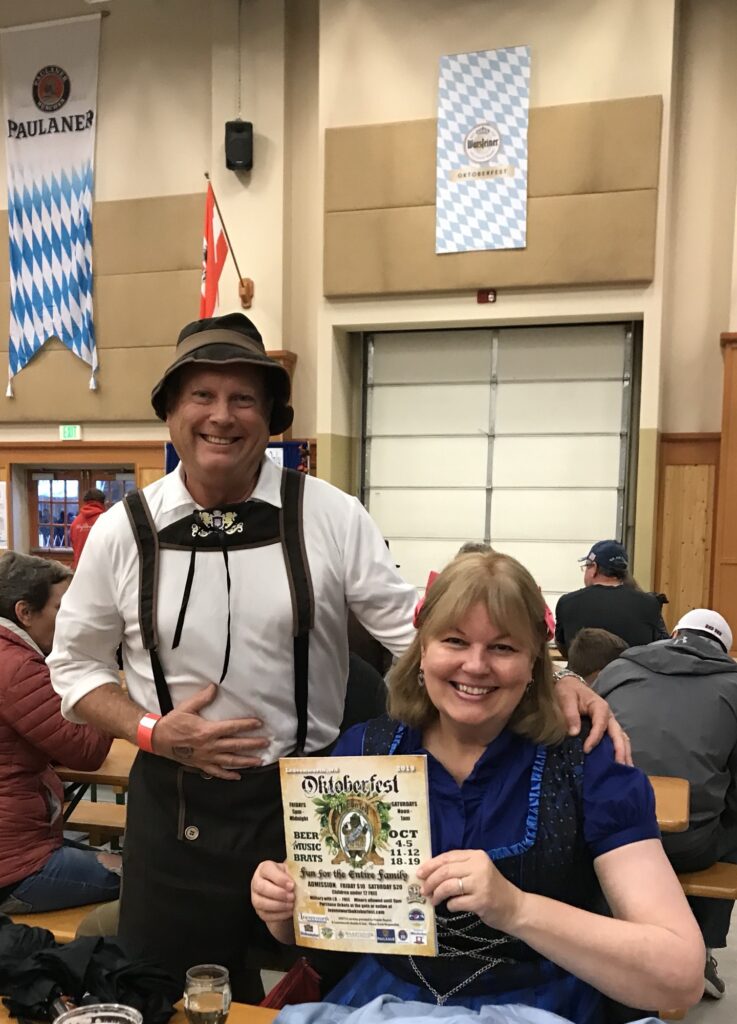
Today some argue that the European lifestyle, with government-provided healthcare and education, better reflects the modern American Dream for those under 40 than the traditional American Dream held by older residents of the USA. The European Dream emphasizes sustainable development, quality of life, a fair work environment and interdependence, while the over 40 American Dream focuses on economic growth, personal wealth, and independence. Nonetheless, the reality of the American Dream has not been as inclusive as the ideal, with many minority groups still facing significant barriers to achieving success.
Religious Freedom
Protestant Ethic

The Protestant Ethic also known as the Calvinist work ethic or the Puritan work ethic, is a concept in sociology, economics, and historiography that values hard work, thrift, and efficiency in one’s worldly calling. It is associated with the belief that worldly success could be interpreted as a sign of eternal salvation, and thus was vigorously pursued. This ethic is often linked to the economic success of Protestant groups in the early stages of European capitalism
The American Dream, on the other hand, is the belief that through hard work, courage, and determination, one can achieve prosperity and upward mobility. It is a foundational principle of American life and culture, emphasizing the potential for individuals to secure a better life for themselves and their children through hard work and adherence to societal rules3 10.
Prosperity Gospel
The prosperity gospel relates to the American Dream by promoting the idea that believers may achieve both divine salvation and worldly success.
This belief system is not associated with specific Christian denominations, but rather with certain charismatic and Pentecostal leaders and movements. Some of the prominent figures associated with the prosperity gospel movement include Paula White-Cain, Joel Osteen, Creflo Dollar, Kenneth Copeland, T.D. Jakes, and Joyce Meyer, among others24. These leaders and their ministries have been influential in promoting the prosperity gospel, which emphasizes believers’ abilities to transcend poverty and/or illness through devotion and positive confession, and affirms the religious and spiritual legitimacy of wealth accumulation4.
It teaches that faith, positive thoughts, positive declarations, and donations to the church can draw health, wealth, and happiness into believers’ lives. Adherents of the prosperity gospel believe that God wants believers to be richly blessed in this life and that physical well-being and material riches are always God’s will for the faithful. This teaching fuses salvation with material goods, and as believers pursue spiritual rewards, they are also, perhaps paradoxically, striving for the American Dream. The prosperity gospel, therefore, aligns with the American Dream’s emphasis on the possibility of upward social mobility and success through hard work, determination, and initiative. See ‘Hard prosperity gospel’: Christians outraged over Trump’s appointment of ‘heretic’ pastor.
Legality and Morality
As for the assumption of legality and morality in both concepts, the Protestant Ethic, in its original religious context, would certainly assume that those chosen to go to heaven and identified by their wealth would behave morally and legally. This is because the Protestant Ethic values self-discipline, the stewardship of possessions, and the avoidance of sinful activities12.
The American Dream, on the other hand, does not explicitly assume that the work done to rise to the top is done legally. However, it is generally understood that the American Dream involves playing by the rules of society, which would include adhering to laws. Furthermore, laws in the workplace are seen as part of the American Dream, protecting against bias and discrimination and allowing people of all races and genders to achieve economic progress3 11.
Netscape vs Microsoft
In 1994 Clark was tied to a company called Netscape. Netscape’s vision was the creation of the company’s two founders, Jim Clark and Marc Andreessen. The two formed an odd couple, even by the standards of Silicon Valley. This binding required competing with Bill Gates.
Bill Gates’ wealth accumulation through Microsoft has been a subject of controversy, with some attributing it to predatory monopolistic practices rather than honest work. The U.S. Department of Justice (DOJ) and several economists have scrutinized Microsoft’s business practices, particularly during the 1990s and early 2000. The DOJ’s case against Microsoft, United States v. Microsoft Corp., focused on the company’s alleged predatory strategies and barriers to market entry1. The government argued that Microsoft abused its market power through a pattern of predatory and exclusionary practices2. The company was accused of trying to create a monopoly that led to the collapse of Clark’s rival Netscape by giving its browser software for free3. The judge ruled that Microsoft violated parts of the Sherman Antitrust Act and ordered the company to break up into two entities3.

Microsoft’s Internet Explorer demolished Netscape Navigator in the market, but did it with tactics that brought an anti-trust suit against Microsoft. The lawsuit did not slow Internet Explorer’s rise or save Netscape, but it did curb Microsoft’s drive toward a “Windows Web.” Since then, competing browsers like Firefox, Chrome, and Safari have emerged, all of them – Internet Explorer included – using open, commonly shared technologies. MOHAI.
An article in The Economist titled “Microsoft in the dock” discussed the government’s case against Microsoft, suggesting that the company may have abused its monopoly power2. Another article in The Economist, “Now bust Microsoft’s trust,” portrayed Microsoft as a relentless and predatory monopolist, using its market power and immense profits to stifle innovation, such as Clark’s and harm both consumers and any companies that dared to compete with it4
However, it’s important to note that while Microsoft was accused of predatory monopolistic practices, and lost the antitrust case, the company and Gates himself have consistently denied these allegations. Gates has stated that “Microsoft follows the rules. Microsoft is subject to the rules”1. Furthermore, some economists have argued that antitrust laws hurt consumers as well as the success of domestic firms in global competition3.
In conclusion, while there are allegations that Bill Gates’ wealth accumulation was more related to predatory monopolistic practices than honest work, it’s a complex issue with differing viewpoints. Gates and Microsoft have consistently denied these allegations, and some economists have argued against the use of antitrust laws in such cases.
The American Dream emphasizes the potential for individuals to achieve success and reach high levels of wealth through hard work and perhaps luck. Exercising monopoly power, as Bill Gates did, is directly opposed to individual achievement, which is the biggest part of the American Dream. Gates was James Clark’s greatest adversary.
James H. Clark
James H. Clark, an entrepreneur and computer scientist, is a model of the American Dream due to his significant achievements in the tech industry. Stanford University played a crucial role in Clark’s success. He served as an associate professor of electrical engineering at Stanford after getting his GED, B.S., and Ph.D.
Prior to Stanford, Clark was in the US Navy, where he was introduced to electronics. This experience was the stepping stone. A high school dropout who joined the navy at 17, Clark was teaching computer science at Stanford by 1979. Three years later, he started a company specializing in advanced computer graphics.
Silicon Graphics, Inc. (SGI) went on to make the high-powered workstations that created the special effects for Jurassic park.
By 1994, it was well on its way to more than $2 billion in annual sales. In 1994, at the age of 49, Clark was one of the legends of the high-tech world. Clark, however, had become frustrated with Silicon Graphic’s reluctance to pursue the high-volume, low-end consumer market. In February 1994, he stepped down as chairman, walking away from millions of dollars of stock options with the idea of starting again.
Clark had a nimble mind and a willingness to take risks. At the time, he was particularly intrigued by interactive television and consumer electronics. His interest was also piqued by Mosaic, the first widely used browser for the World Wide Web. Out of curiosity, Clark sent an e-mail to Marc Andreessen, one of Mosaic’s developers, and soon a partnership was born.
In conclusion, Gates’ background and the allegations against Microsoft with his entrepreneurial success and philanthropic endeavors align with the fundamental principles of the Prosperity Gospel better than the American Dream.
The two began by hashing out a number of concepts related to Clark’s original interest, interactive TV…. Once it had become clear that a full-scale rollout of interactive TV was nowhere in sight, the pair took up other ideas, including an online game service for Nintendo. Finally, Andreessen came up with the winning plan–create a “Mosaic-killing” browser or “Mozzilla” for short
Once Andreessen had laid out his ideas about the future of the internet and global computing, Clark was hooked. Andressen would bring the technology, and Clark would bring the money (eventually more than $4 million of his own funds) as well as the maturity, experience, and world-class contacts.
The above is from page 20 and 21 of Competing on Internet Time by Michael A. Cusumano and David B. Yoffie

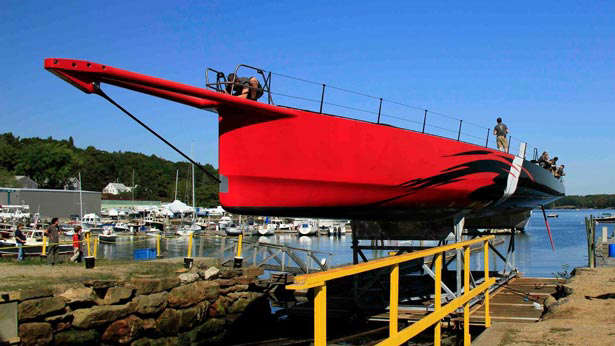
Acording to the builder “The carbon-fibre built Comanche marks a step in advanced build technology for Hodgdon Yachts, the oldest builder in America. Hodgdon’s European Sales & Marketing Director Cyril Le Sourd, appointed to head the company’s recently opened office in Monaco, notes the builder’s ability to blend traditional and modern boatbuilding as its strength. ‘One shed we can have this aerospace technology build and in the next we might have a classic,’ he says.
Comanche has been launched after an extremely compressed build schedule, built for experienced owner Jim Clark, who has famously owned the 90-metre Royal Huisman iconic superyacht Athena, which is currentlyfor sale
The yacht’s carbon fibre hull sports a fierce red-and-black paint job that should look sharp as she flies across the water at her expected high speeds.” And while Clark may be too old to be on board for some of the more competitive races, his 35-year-old wife seems more than ready, starting on December 26 in Sydney.’My wife’s an Australian and a very competitive lady and she wants to sail in Sydney-Hobart,’ said Clark.’I say “we have the boat, do as you wish.” I’ll let her run the show.’
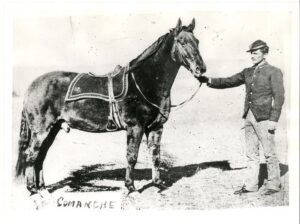
One war horse that did manage to gain himself a bit of fame was Comanche, who served in the Great Sioux War of 1876. After his death, this decorated hero was stuffed and you can actually still see his body today at the University of Kansas Natural History Museum in Lawrence, KS.
I have not found a documented reason for naming the race boat Comanche. But it is an important naming.
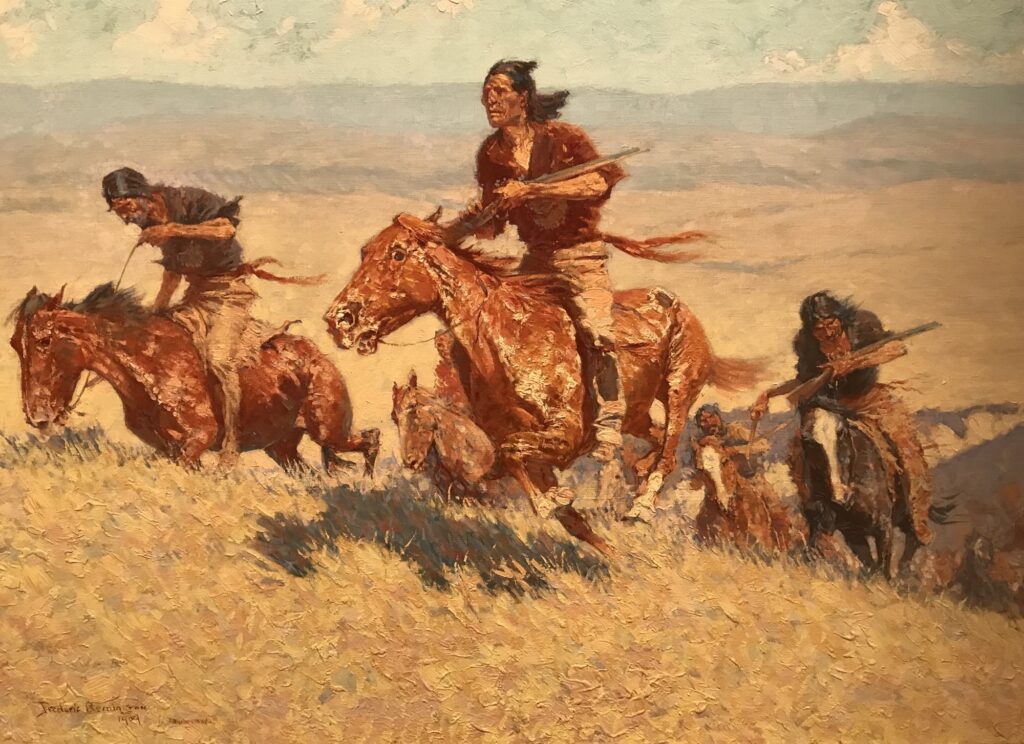
The Comanche people do not represent the American Dream in the traditional sense. Their historical and cultural significance lies in their nomadic horse culture, fierce warrior traditions, and their adaptation to the challenges brought by European colonization.

The Comanche had a strong belief in the personal power of individuals rather than spirits, and their religion was animistic, involving a belief in a creator spirit and its counterpart, an evil spirit, and accepting the Sun, the Earth, and the Moon as deities. Their traditional religion was a personal matter, not an organized one.
They thought they had originated from animals, perhaps wolves. There was no special class of religious leaders and the Comanche had few ceremonies, with emphasis being laid on the male vision quest.
The Comanche were a powerful Native American tribe that ruled the Great Plains of North America for over a century. There are around 17,000 enrolled Comanche members today. To be officially recognized as Comanche, one must have at least 1/4 Comanche blood quantum3.

The key benefits of being Comanche were their military prowess, mastery of horsemanship, and ability to adapt Spanish technologies and tactics to resist colonial powers12. This allowed the Comanche to build a vast empire and dominate the region for generations.
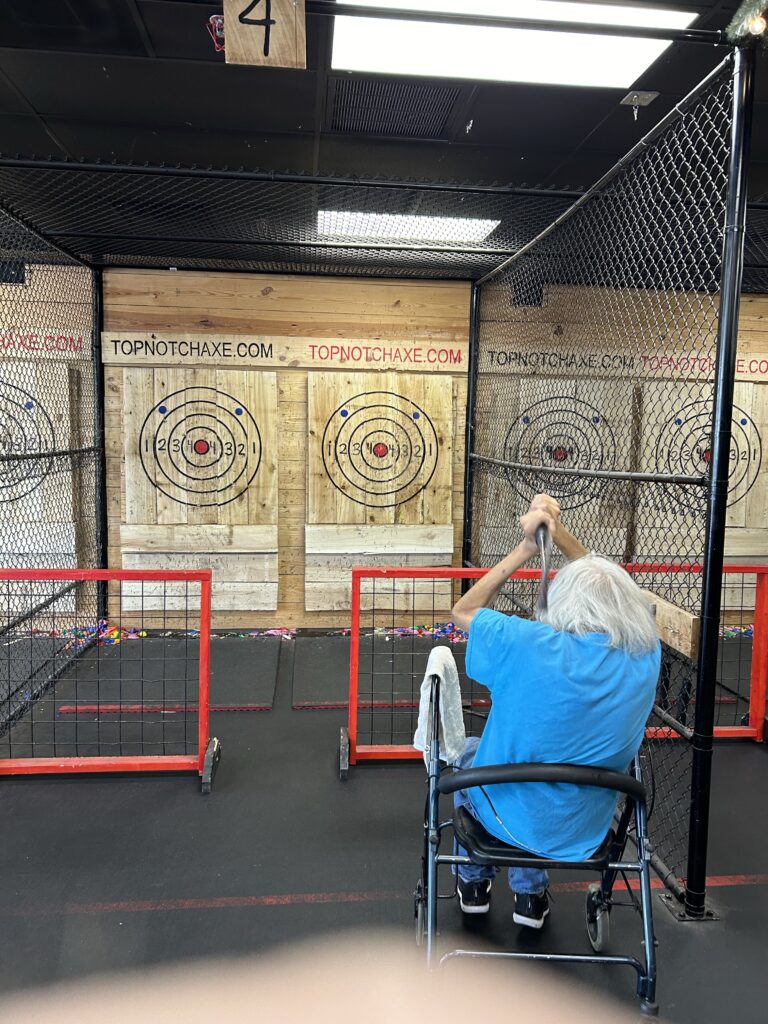
However, the Comanche faced significant disadvantages as well. The loss of their land and resources through treaties and encroachment by settlers led to famine, disease, and the near-destruction of their way of life345. Today, many Comanche still struggle with high rates of poverty, unemployment, and social issues on the former reservation lands in Oklahoma3.
Most Comanche people, around 4,000, still live in southwestern Oklahoma near the old reservation lands3. Others have moved to urban areas, but the Comanche have maintained their cultural identity and traditions despite the challenges they have faced over the centuries.
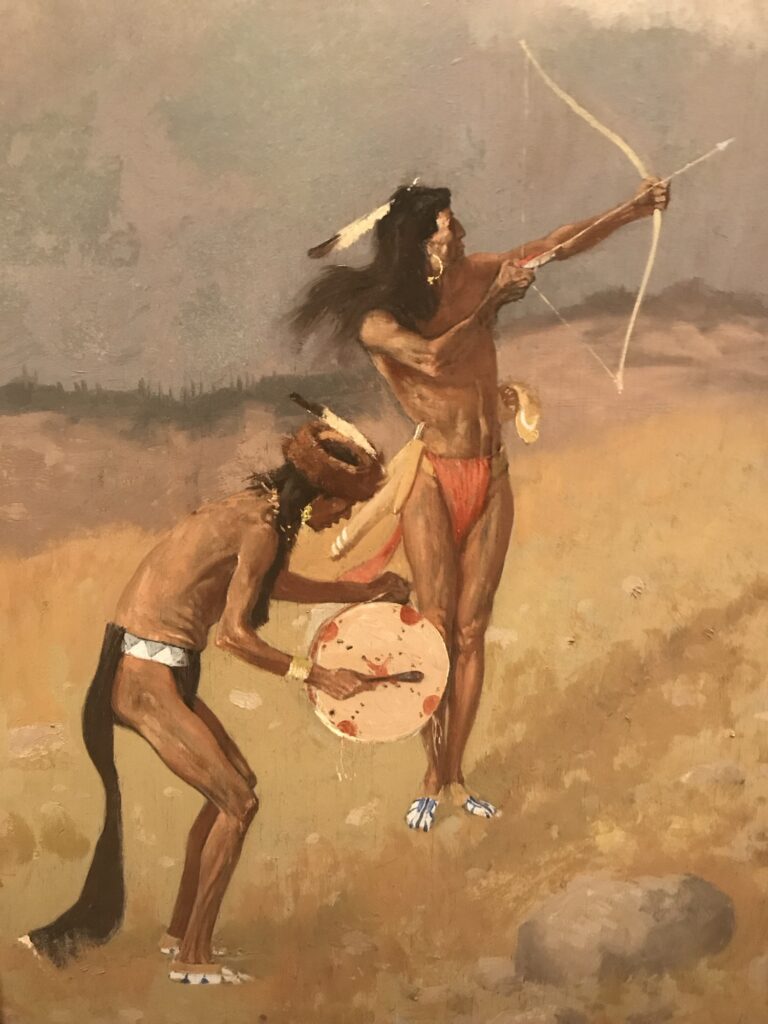
Today, the Comanche people continue to preserve and celebrate their cultural heritage, including traditional religious practices, while also engaging in economic development and modern activities, such as operating casinos and cultural events. Many participate in Christian organized religions.

The Comanche people’s representation of the American Dream is more closely tied to their cultural resilience and their ability to maintain their traditions in the face of adversity, rather than a pursuit of material wealth or success. James Clark honors that spirit with his racing yacht named after them.
The yacht Comanche has participated in the Sydney Hobart Yacht Race and achieved notable success. To win the Sydney Hobart Yacht Race, a combination of tactical skill, strategic decision-making, and favorable weather conditions is essential.

The race covers a distance of 628 nautical miles from Sydney to Hobart, and winning the tactical battle plays a significant role in securing victory25. The final approach to Hobart, up the Derwent River, can be crucial, as winds can be fickle, and a lead can be lost in the final miles5. The Rolex Sydney Hobart Yacht Race has a rich history, having been held annually since 1945. It was first organized when a group of Sydney yachtsmen planned a post-World War II cruise to Hobart, and the race has since become a platform for human achievement and endeavor.
Comanche, built by James Clark, has been skippered by various individuals during the Sydney Hobart races, including John Winning Jr in 20225 and Ken Read in 20144. In 2017, under a different skipper, Comanche set the race record with a time of one day, nine hours, 15 minutes, and 24 seconds3.
In 2022, Comanche, skippered by John Winning Jr, took line honours in the race, marking its fourth line honours victory in the past seven races5. This vessel is James Clark’s Legacy.
Before analyzing Clark as a role model for the American Dream first the USA population is analyzed.
Generational Breakdown
Generational differences are a significant factor in analyzing the American Dream. The generations currently active in the USA include:
- Silent Generation: Born between 1928 and 1945, this generation is characterized by their experiences of the Great Depression and World War II, which have shaped their values around hard work, financial prudence, and respect for institutions. This generation leans more towards the Republican Party, with 52% identifying or leaning Republican compared to 43% identifying or leaning Democratic1. In 2022, this generation accounted for 5.49% of the population1. They are likely to hold that the American Dream is religious freedom and is tied to the Protestant Ethic where one’s wealth stewardship on earth demonstrates who goes to heaven.
- Baby Boomers: Born between 1946 and 1964, they grew up during a time of economic prosperity and are often associated with a strong work ethic, competitiveness, and a traditional view of the American Dream, which includes home ownership and upward mobility2 but may not involve organized religion. Baby Boomers are more evenly divided in their political affiliations, with roughly equal shares identifying with or leaning towards both parties2. In 2022, this generation accounted for 20.58% of the population1. This generation has the most children in college.
- Generation X: Born between 1965 and 1980, this generation has faced economic challenges that have altered their perception of the American Dream. They are more skeptical of institutions and value work-life balances and individualism6. Generation X has become more conservative and Republican over the last 10 years2. In 2022, this generation accounted for 19.61% of the population1.
- Millennials: Born between 1981 and 1996, they have been shaped by the digital revolution and economic uncertainty. They tend to value experiences over possessions and are more liberal on social issues5. Millennials have the highest proportion of independents of any generation, but when their partisan leanings are taken into account, they are the most Democratic generation2. In 2022, this generation accounted for 21.67% of the population1. Among voters, the population of Millennials is currently the largest. despite being the largest generation in the electorate, Millennials have not been the largest generational bloc of actual voters.
- Generation Z: Born after 1996, they are the most racially and ethnically diverse generation and are digital natives. They have shown high levels of political engagement and are more progressive on issues like climate change and social justice13. Generation Z voters are much more liberal and are expected to be a source of electoral strength for Democrats for some years to come3. However, recent polling by Harvard suggests that independent and Republican generation Z voters have tuned out, deciding to avoid becoming informed as a stress coping mechanism.
The American Dream traditionally means achieving greater prosperity than the previous generation. However, this concept has evolved, and younger generations, especially Millennials, place more importance on pursuing their passions like Taylor Swift and are less focused on material milestones2 and wealth accumulation.
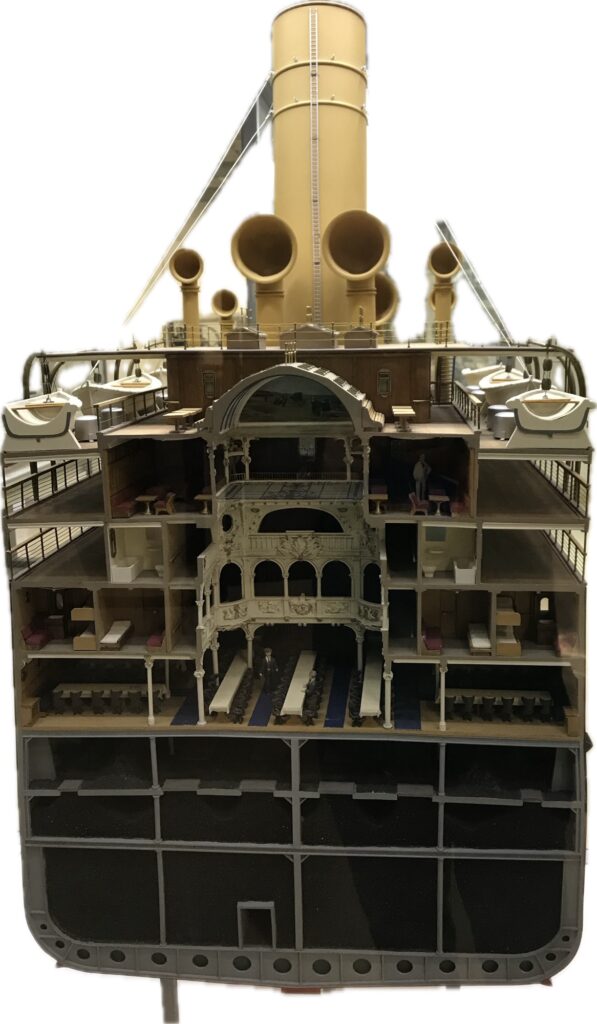
Partial view of Express Liner “Kaiser Wilhelm I” showing a cross section of the first class dining lounge and coal bunkers in the lower part of the vessel. During the journey, about 5,000 tons of coal stored in these bunkers had to be carried by hand to the 19 boilers and then fired, about 240 haulers and stokers performed this exhausting work. Directly above lies the first class dining lounge; it is 4 decks high and seats 554 persons. 170 stewards and 60 cooks, bakers and pastrycooks catered for the passengers on board, which numbered about 2,500.
Regarding climate issues, younger generations, including Generation Z and Millennials, are more likely than older ones to support phasing out the use of oil, coal, and natural gas entirely3. This suggests that older generations may be less concerned about climate issues compared to their younger counterparts.

16,000 years ago, the Seattle area was buried beneath a thick ice sheet. When the climate warmed at the end of the last ice age, the glacier melted and left behind deep gouges and mounds of dirt-forming the landscape of hills, lakes and Puget Sound you see today. We know how high the glacier stretched based on the location of glacial deposits on nearby mountains.
Younger generations are also looking for changes in various aspects of life that align more closely with European standards. For example, they are generally more supportive of universal healthcare, affordable education, stricter gun control measures, and a more progressive tax system457. These preferences reflect a desire for a social safety net and policies that promote equality and sustainability, which are more prevalent in European countries.
In summary, generational differences in the definition of the American Dream are shaped by younger generations showing a greater concern for progressive issues, including climate change, and a desire for policies that resemble those found in Europe.
Master/Slave Economy vs Democracy Fair Economy
Thom Hartmann, radio and television commentator, businessman, and prolific author to trot out one of his recent titles, The Hidden History of American Oligarchy, where he has argued that the South had ceased to be a democracy by the 1830s primarily due to the invention of the cotton gin and mass production by Eli Whitney. Moreover, at the time the Civil War broke out the South was already “a full-blown police state run by a few thousand morbidly rich families who lived and acted like the feudal lords of ancient Europe.” And when the pro-slavery South seceded from the anti-slavery Union and the Civil War began it was because the former wanted a nation comprised only of slave owning states.
As Hartmann wrote in a Raw Story commentary on January 2, 2024: “The simple reality is that the pro-slavery South is still very much with us, and is still—after 163 years—trying to make the case that democracy should be replaced with a strongman white supremacist oligarchy.”
American oligarchy: The fight for democracy is just the first step
The American Dream as described above is heavily influenced by oligarchy even if the American government itself isn’t completely controlled by them. For example, about one-third of the homes purchased in the nation in 2022 were purchased by oligarchs. Hence many holding home ownership as their American dream were denied. According to Bernie Sanders “In the year 2022, three multibillionaires own more wealth than the bottom half of American society – 160 million Americans. Today, 45% of all new income goes to the top 1%, and CEOs of large corporations make a record-breaking 350 times what their workers earn.”
Because “oligarchy” is a slightly amorphous, subjective term, there is no definitive list of which countries are and are not oligarchies. However, a strong case could be made for each of the following countries: China, Iran, Saudi Arabia, North Korea, Russia, Turkey, Ukraine, United States (debated), Venezuela, and Zimbabwe. Note that oligarchy is not necessarily an exclusive term. For example, while North Korea’s one-party system qualifies it as an oligarchy, it could also be classified as a hereditary Stalinist dictatorship and even an absolute monarchy.
Oligarchy Countries 2024
The struggles against oligarchy in the United States have been ongoing and multifaceted, reflecting the tension between democratic ideals and the concentration of power and wealth since prior to the nation’s founding. Here are some of the major struggles and how oligarchy was challenged in each case:
Boston Tea Party
The Boston Tea Party was a protest against the British government’s Tea Act, which granted the British East India Company a monopoly on tea sales in the American colonies. This act was seen as an example of oligarchic control over the colonies, favoring a powerful corporation at the expense of local businesses and without the consent of the governed. The colonists’ act of defiance, dumping tea into Boston Harbor, was a catalyst for the American Revolution, which ultimately led to the establishment of a new nation founded on principles of representation and democracy3711.
In 1773, American colonists protested against British rule over the colonists by dumping 342 chests of tea into the harbor2. This event was the first major act of defiance to British rule over the colonists and rallied American patriots across the 13 colonies to fight for independence2.
The Constitution assigned fiscal powers to Congress rather than the president “not as a formality, but as a structure of democratic accountability rooted in the issues that originally led to the creation of the United States.” The American colonies literally rebelled against Britain in part because it imposed tariffs without giving the colonists a say in Parliament.
Why Trump’s tariffs are in trouble 8/1/2025
Civil War
The Civil War was, in part, a struggle against the oligarchic power of Southern slaveholders who dominated the economy and politics of the South. The victory of the North in the Civil War and the subsequent passage of the 13th, 14th, and 15th Amendments were meant to dismantle the oligarchic structure of the slave economy. However, the oligarchic system persisted in different forms, moving westward and establishing a foothold there, as argued by Heather Cox Richardson248.
The Civil War, Emancipation, and Reconstruction represent the victory not just of democracy but also of the working classes over the slaveholding oligarchy1. It also marked a victory for capitalist government1.
Carnegie Steel
The rise of Carnegie Steel, led by Andrew Carnegie, represented a form of oligarchy in the industrial era. Carnegie’s company became the largest and most profitable steel company in the world by the 1890s, largely due to strategies like vertical and horizontal integration49. However, the oligarchic power of Carnegie Steel was challenged by labor movements, most notably the Homestead Strike of 1892. Despite the defeat of the strikers, the event highlighted the struggle against oligarchic control in the industrial sector and set the stage for future labor rights movements510. As discussed above, work-life balance is the dream of those born between 1965 and 1980 in the USA (the Millennial Generation.)
Andrew Carnegie’s Carnegie Steel Company was sold in 1901 in one of the largest business transactions of the early 20th century, to become the major component of U.S. Steel3. U.S. Steel was a conglomerate with subsidiary companies3.
Microsoft
The antitrust case against Microsoft in the late 1990s and early 2000s can be seen as a struggle against oligarchic power in the technology sector. The U.S. government’s lawsuit against Microsoft alleged that the company had abused its market power to stifle competition. The case resulted in a settlement that imposed restrictions on Microsoft’s business practices, thereby promoting competition and challenging the company’s oligarchic dominance in the software market5.
Legal Challenges to Chevron Deference
The legal doctrine known as “Chevron deference” has been criticized for allowing administrative agencies, which can be influenced by powerful corporate interests, to interpret ambiguous laws. Some legal scholars and judges have argued that this doctrine violates the separation of powers and allows for oligarchic control over the lawmaking process. This has led to ongoing legal debates and challenges to the doctrine11. Chevron is one of the Dow Jones stocks used to compute the Dow Jones industrial average.
Trump Presidencies
The presidency of Donald Trump has been cited as an example of oligarchic tendencies in American politics, with critics arguing that his administration favored the wealthy and powerful26. Though Trump has yet to concede, the defeat of Trump in the 2020 election could be seen as a democratic response to these tendencies. However, the broader struggle against oligarchy in the context of the Trump presidency involves ongoing efforts to address wealth inequality, corporate influence in politics, and the protection of democratic institutions569.
Heather Cox Richardson argues that the rise of movement conservatism, as personified by Barry Goldwater in his 1964 presidential campaign, came to embody the vision of an oligarchic America. The new oligarchy’s triumph—one that combined economic domination with racial inequality—lay in a political alliance between the South and the West, Richardson argues, and in the Republican presidencies of Richard Nixon, Ronald Reagan, the Bushes, and finally Trump1.
Labor Movement
The labor movement in the United States, particularly in the late 19th and early 20th centuries, was a significant struggle against oligarchic control. Workers organized strikes and formed unions to fight against the power of industrialists and demand better wages and working conditions. The labor movement led to significant reforms, including the establishment of the eight-hour workday, the abolition of child labor, and the right to collective bargaining3.
Civil Rights Movement
The Civil Rights Movement of the 1950s and 1960s was a struggle against the oligarchic power of racial segregation and discrimination, particularly in the South. The movement led to significant legislative victories, including the Civil Rights Act of 1964 and the Voting Rights Act of 1965, which dismantled legal segregation and protected the voting rights of African Americans2.
Women’s Suffrage Movement
The Women’s Suffrage Movement was a struggle against the oligarchic control of political power by men. The movement culminated in the passage of the 19th Amendment in 1920, which granted women the right to vote2.
Antitrust Legislation
The passage of antitrust laws, such as the Sherman Antitrust Act of 1890 and the Clayton Antitrust Act of 1914, represented a struggle against the oligarchic power of large corporations. These laws were designed to prevent monopolies and promote competition, thereby limiting the power of corporate oligarchs4.
Tax-the-Rich Legislation
Recent proposals to increase taxes on the wealthy represent a contemporary struggle against oligarchy. These proposals aim to reduce income inequality and limit the political influence of the wealthy. While these proposals face significant political challenges, they reflect a growing recognition of the dangers of oligarchy and a desire to take action against it911.
In each of these struggles, oligarchy was challenged through a combination of popular protest, legal action, and political change. However, the fight against the concentration of power and wealth is an ongoing process, with each victory presenting new challenges and forms of resistance.
Netscape Communications Corporation was co-founded by Marc Andreessen and Jim Clark in 1994. Andreessen, a software engineer, had previously developed the Mosaic browser, one of the first graphical web browsers, while Clark was a successful entrepreneur who had founded Silicon Graphics. Netscape’s flagship product, Netscape Navigator, quickly became the dominant web browser in the mid-1990s, revolutionizing internet usage145.
Why Was Netscape Shut Down?
Netscape’s decline was driven by several factors:
- Competition from Microsoft: The release of Internet Explorer (IE) by Microsoft, bundled for free with Windows operating systems, significantly eroded Netscape’s market share. Microsoft’s aggressive tactics were later deemed monopolistic in an antitrust trial245.
- Strategic Missteps: Netscape struggled with product strategy, including delays and feature bloat in its browser development. Additionally, its decision to make its browser free undermined its revenue model24.
- Acquisition by AOL: In 1998, AOL acquired Netscape for $4.2 billion but failed to effectively leverage its technology. Netscape’s browser eventually became obsolete, and AOL officially shut down Netscape in 200824.
Despite its decline, Netscape’s legacy lived on through the open-source Mozilla Foundation, which emerged from its codebase and led to the development of Firefox24.
What Are the Founders Doing Today?
Marc Andreessen
Marc Andreessen is a prominent venture capitalist and co-founder of the Silicon Valley firm Andreessen Horowitz. He has invested in numerous tech companies, including Facebook (now Meta), Twitter, and Airbnb. As of late 2024, his net worth is estimated at $1.7 billion1.
Jim Clark
Jim Clark has diversified his wealth through investments in companies like Meta, Apple, and Palantir. He has also founded other ventures such as Healtheon (later part of WebMD) and Shutterfly. His net worth exceeds $3 billion as of 2023. Clark remains active in technology and philanthropy5.
How Invested Are the Founders in Meta?
Both founders have connections to Meta (formerly Facebook). Marc Andreessen is deeply involved as a board member of Meta through his venture capital firm Andreessen Horowitz. Jim Clark has also invested in Meta as part of his broader portfolio of tech investments15.
Marc Andreessen, co-founder of Andreessen Horowitz (a16z), remains actively involved in several significant projects and investments:
Venture Capital and Investment
- Andreessen Horowitz (a16z): As a general partner at a16z, Andreessen continues to lead one of the most influential venture capital firms in Silicon Valley. In April 2024, a16z raised $7.2 billion for various venture strategies, including American Dynamism, Apps, Games, Infrastructure, and Growth4.
- Biotech Ecosystem Venture Fund: In January 2025, a16z partnered with Eli Lilly to launch a $500 million fund focused on advancing new medicines, novel modality platforms, and emerging health technologies5.
- Private Equity Expansion: As of June 2024, a16z was planning to launch its first private equity fund, named a16z Perennial Private Equity Fund, marking a significant expansion of the firm’s investment strategies3.
Real Estate and Urban Development
- California Forever: Andreessen is an investor in this ambitious project aiming to build a new utopian city in Solano County, California. The project involves over 60,000 acres of land and has faced some setbacks, including postponing a crucial ballot measure1.
- Family Real Estate Development: Andreessen’s family, through his wife Laura Arrillaga-Andreessen and brother-in-law, is planning a substantial community development near Vacaville, California. This project includes more than 1,000 homes and is located close to the proposed California Forever development1.
Philanthropy and Advisory Roles
- Arrillaga Foundation: Andreessen serves as the chief financial officer of the Arrillaga Foundation, continuing his involvement in philanthropic efforts1.
- Technology and Policy Influence: Through a16z, Andreessen continues to be involved in efforts to influence policy-making in the tech and finance sectors, leveraging the firm’s network of academics and researchers3.
Marc Andreessen’s current projects reflect his ongoing commitment to technology investment, urban development, and shaping the future of various industries through venture capital and strategic initiatives.
a16z, short for Andreessen Horowitz, is a prominent venture capital firm founded in 2009 by Marc Andreessen and Ben Horowitz. The firm has established itself as a leading player in the tech investment landscape, with a focus on supporting innovative companies across various sectors.
Key Characteristics
- Full-service approach: a16z offers not just capital but also access to a vast network, public relations support, and assistance with strategic partnerships and business development.
- Hands-on mentoring: The firm’s partners actively work with portfolio companies, providing guidance and operational expertise.
- Long-term focus: Unlike traditional VC firms, a16z is willing to invest in companies at various stages and hold investments for extended periods.
Investment Strategy
a16z has evolved its investment strategy to address the expanding tech market:
- Dedicated funds: The firm has created specialized funds for different sectors, each with its own team of experts.
- Recent fundraising: In April 2024, a16z raised $7.2 billion for various venture strategies, including:
- American Dynamism ($600M)
- Apps ($1B)
- Games ($600M)
- Infrastructure ($1.25B)
- Growth ($3.75B)3
Notable Initiatives
- a16z Crypto: A dedicated platform for blockchain and cryptocurrency investments.
- Cultural Leadership Fund: Aims to promote diversity and inclusion in the tech industry.
- a16z Bio: Supports innovative companies in life sciences and biotechnology.
- a16z Marketplace: A platform connecting portfolio companies with various services.
- a16z Talent Network: A curated community of professionals available to advise portfolio companies.
Recent Developments
In January 2025, a16z partnered with Eli Lilly to launch the Biotech Ecosystem Venture Fund, a $500 million initiative focused on advancing new medicines, novel modality platforms, and emerging health technologies14.As of 2022, a16z had $44 billion in committed capital across multiple funds4, demonstrating its significant influence and scale in the venture capital industry.
The Great Gatsby’s Impact on the American Dream Over 100 Years and Its Distribution to World War II Soldiers
The Great Gatsby’s Transformation of the American Dream
The Great Gatsby fundamentally reshaped how Americans understood and critiqued the American Dream over the past century. Published in 1925, F. Scott Fitzgerald’s novel evolved from a commercial failure to one of America’s most influential literary works, largely through its distribution to soldiers during World War II123.
Initially, The Great Gatsby was a publishing disappointment. The first edition sold poorly, with only 7 copies sold in the month before Fitzgerald’s death in 19403. However, the novel’s profound critique of the American Dream resonated powerfully once it reached a broader audience through the Armed Services Editions program.
The Novel’s Critique of the American Dream
Fitzgerald’s work presented a pessimistic critique of the American Dream that challenged traditional notions of success and prosperity4. The novel depicted the 1920s as “an era of decayed social and moral values, evidenced in its overarching cynicism, greed, and empty pursuit of pleasure”5. Through Jay Gatsby’s tragic pursuit of Daisy Buchanan, Fitzgerald illustrated how the American Dream had been corrupted by materialism and class divisions67.
The novel’s central thesis was that “the American dream was originally about discovery, individualism, and the pursuit of happiness” but had become corrupted by “easy money and relaxed social values” in the 1920s5. This corruption was symbolized through Gatsby’s criminal activities to achieve wealth and his ultimate failure to transcend social class barriers[10 Impact
Over the last 100 years, The Great Gatsby has maintained its relevance by serving as a mirror for each generation’s relationship with the American Dream. The novel has been continuously reinterpreted through different cultural lenses:
Post-World War II Revival: The novel’s popularity exploded after its distribution to soldiers, creating “a nation of readers” who returned home with an appreciation for serious literature18. This marked the beginning of its transformation into a Great American Novel.
Cultural Iconography: The book became synonymous with the “Great Gatsby era,” influencing fashion, film, and popular culture representations of the 1920s1. Every economic boom has brought renewed interest in the novel’s themes of wealth and excess.
Modern Relevance: The 21st century has seen The Great Gatsby reinterpreted through hip-hop culture, particularly with Jay-Z’s involvement in the 2013 film adaptation. The parallels between Jay Gatsby and Jay-Z as self-made men who transcended their origins resonated with contemporary audiences1.
World War II Distribution and Military Impact
The Armed Services Editions Program
The Great Gatsby was distributed to World War II soldiers through the Armed Services Editions (ASE) program, a revolutionary initiative that provided over 122 million books to American service members between 1943 and 1947910.The program was created by the Council on Books in Wartime with the motto “books are weapons in the war of ideas”10.
The Great Gatsby was published as ASE Z-18 in October 1945, with 155,000 copies distributed to soldiers113.However, because soldiers typically shared books, over 1 million soldiers read Fitzgerald’s novel, with each copy being read approximately seven times12.
Why The Great Gatsby Was Chosen
The selection committee chose The Great Gatsby for several strategic reasons:
- Literary Merit: The novel was recognized for its “almost geometrical structure” and artistic achievement2
- Psychological Relevance: The themes of alienation and longing resonated with soldiers far from home1
- American Identity: The novel explored fundamental questions about American values and society13
Impact on Soldiers and Post-War Culture
The distribution of The Great Gatsby to soldiers had profound consequences:
Immediate Impact: Soldiers found the novel’s themes of longing and alienation particularly relevant to their wartime experiences. The book offered “an escape to a far away land” and provided psychological comfort during difficult conditions2.
Post-War Literary Renaissance: Returning veterans created a market demand for serious literature. Publishers noted that the ASE program had created “millions of voracious readers” who continued seeking quality books after the war814.
Educational Influence: Many veterans used the G.I. Bill to attend college, bringing their appreciation for literature into higher education and helping establish The Great Gatsby as a standard text in American literature courses14.
Other American Dream Books Distributed to Soldiers
The Armed Services Editions program included numerous other works that explored American Dream themes, reflecting the military’s recognition that these stories would resonate with soldiers fighting for American ideals.
Notable American Dream Titles in the ASE Program
A Tree Grows in Brooklyn by Betty Smith was arguably the most popular ASE book among soldiers815. The novel about a working-class immigrant family in Brooklyn pursuing a better life struck a powerful chord with servicemen. Betty Smith received approximately four letters per day from soldiers thanking her for the book, with one Marine writing: “I can’t explain the emotional reaction that took place in this dead heart of mine… A surge of confidence has swept through me, and I feel that maybe a fellow has a fighting chance in this world after all”1516.
My Ántonia by Willa Cather, distributed in March 1944, told the story of pioneer immigrants building new lives on the American frontier1718. The novel’s themes of hard work, perseverance, and community building resonated with soldiers who saw parallels between pioneering spirit and their own sacrifices for democracy.
Death Comes for the Archbishop by Willa Cather provided another perspective on the American Dream through its portrayal of spiritual journey and community building in the American West. One soldier, Corp. Erwin Rorick, found comfort reading it while wounded in a foxhole on Leyte, discovering he liked serious literature despite initially thinking it was a murder mystery17.
Selected Short Stories by Sherwood Anderson (ASE T-25, 1945) offered insights into small-town American life and the pursuit of meaning, reflecting themes that would later influence countless American writers19.
The Broader Impact of American Dream Literature in Wartime
The selection of these books served multiple purposes:
Moral Building: Stories of ordinary Americans overcoming adversity reminded soldiers why they were fighting and what they were defending8.
Cultural Education: Many soldiers were introduced to serious American literature for the first time, with some admitting they “were reading their first book since they were in grammar school”2.
Post-War Preparation: The books helped soldiers envision their return to civilian life and their own pursuit of the American Dream14.
Lasting Legacy
The distribution of The Great Gatsby and other American Dream literature to World War II soldiers created a cultural phenomenon that extended far beyond the war years. These books:
- Democratized Literature: Made serious American literature accessible to millions who might never have encountered it otherwise
- Shaped Post-War Culture: Influenced the values and aspirations of the Greatest Generation as they built post-war America
- Established Literary Canon: Helped cement certain works as essential American texts
- Created Lifelong Readers: Fostered a generation that valued literature and education
The program’s success demonstrates how literature can serve as both entertainment and cultural education, particularly during times of national crisis. The Great Gatsby’s journey from commercial failure to American classic illustrates the power of reaching the right audience at the right moment in history.
Today, as we mark the centennial of The Great Gatsby’s publication, its critique of American materialism and class divisions remains as relevant as ever, continuing to challenge readers to examine their own relationship with the American Dream.


